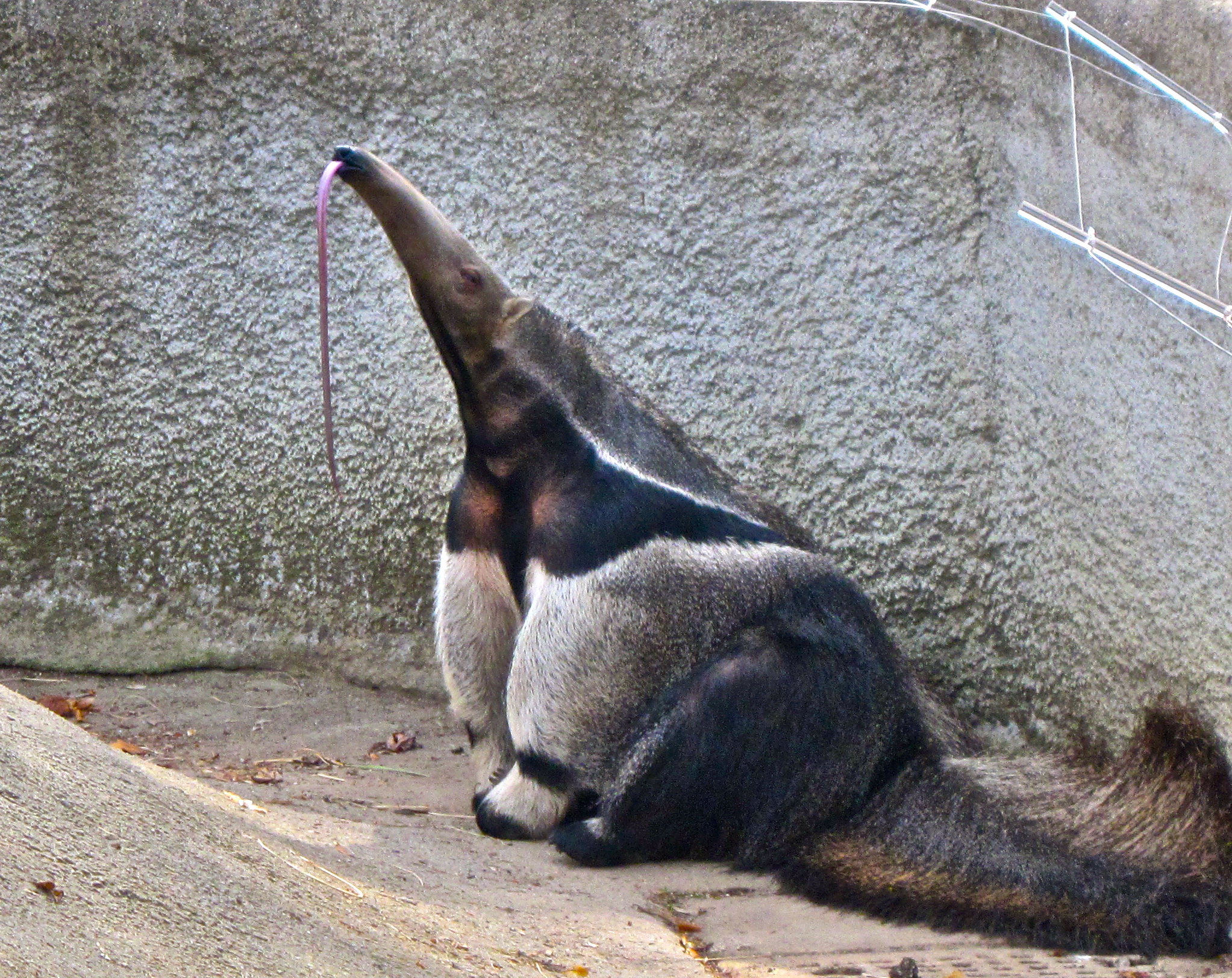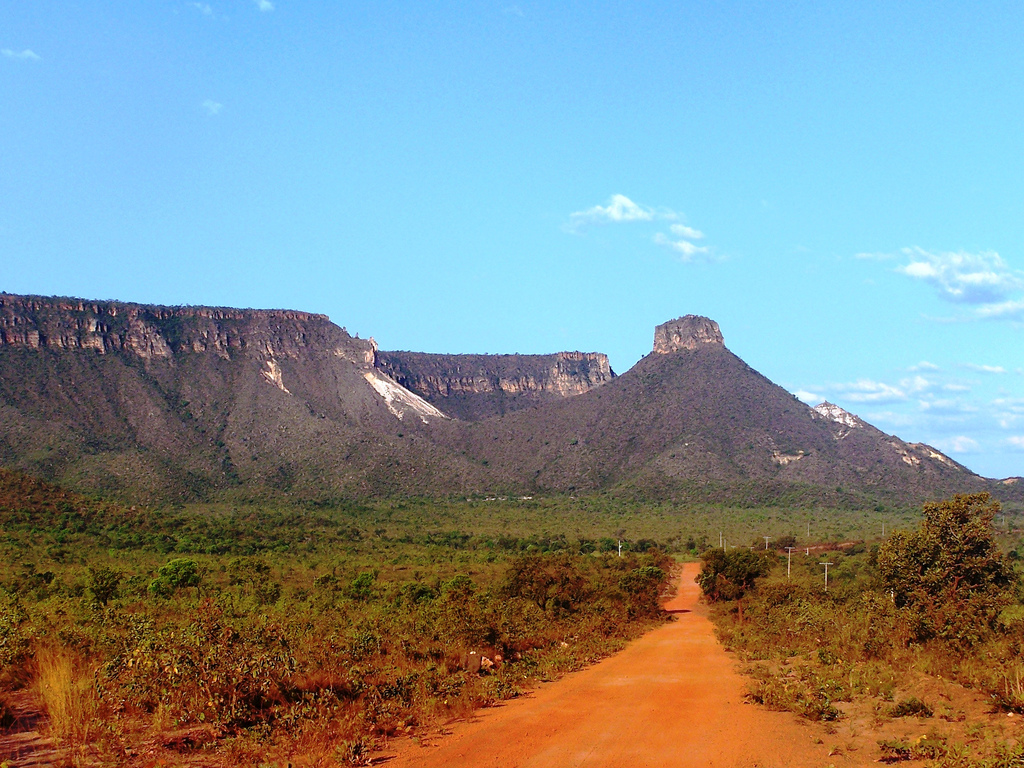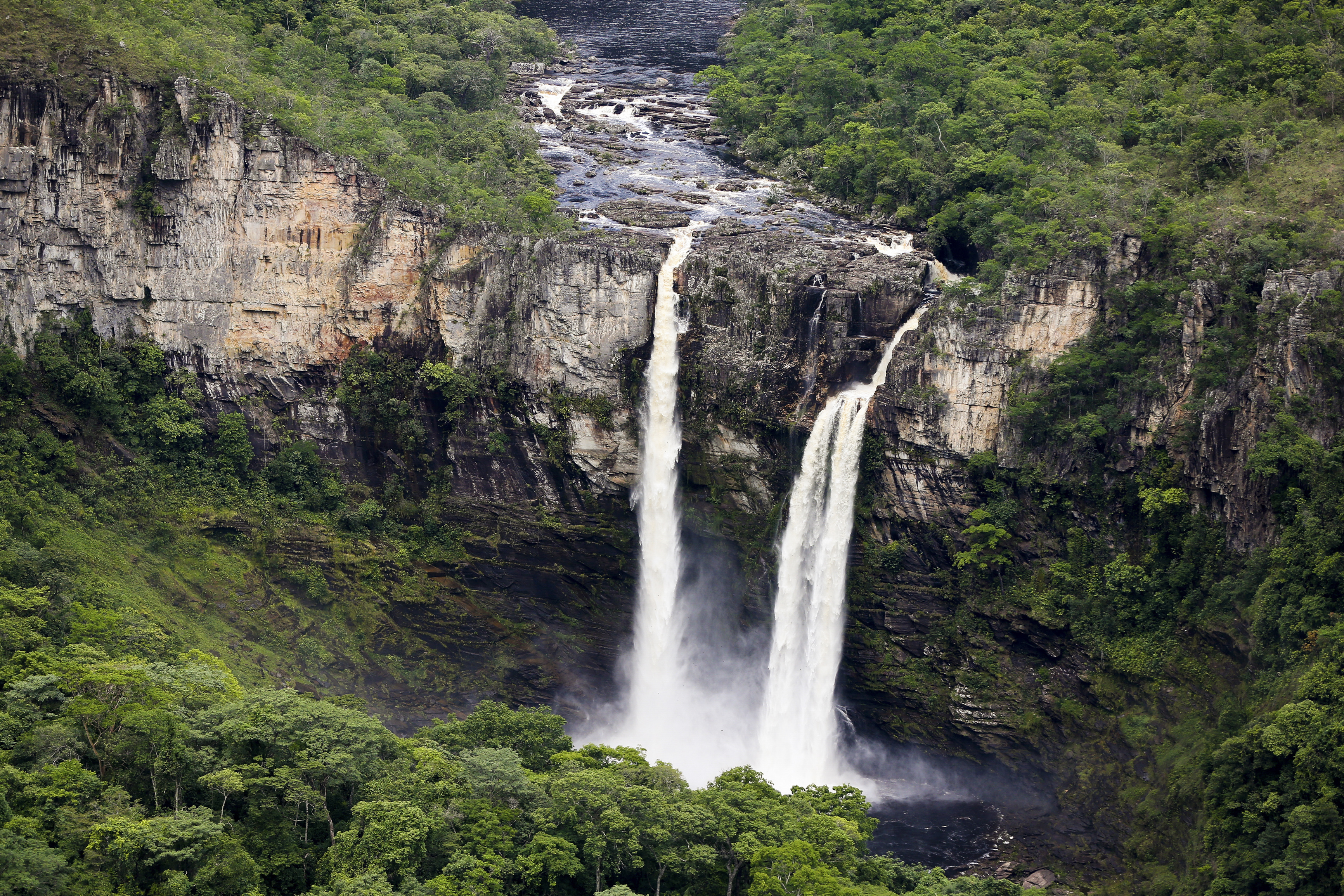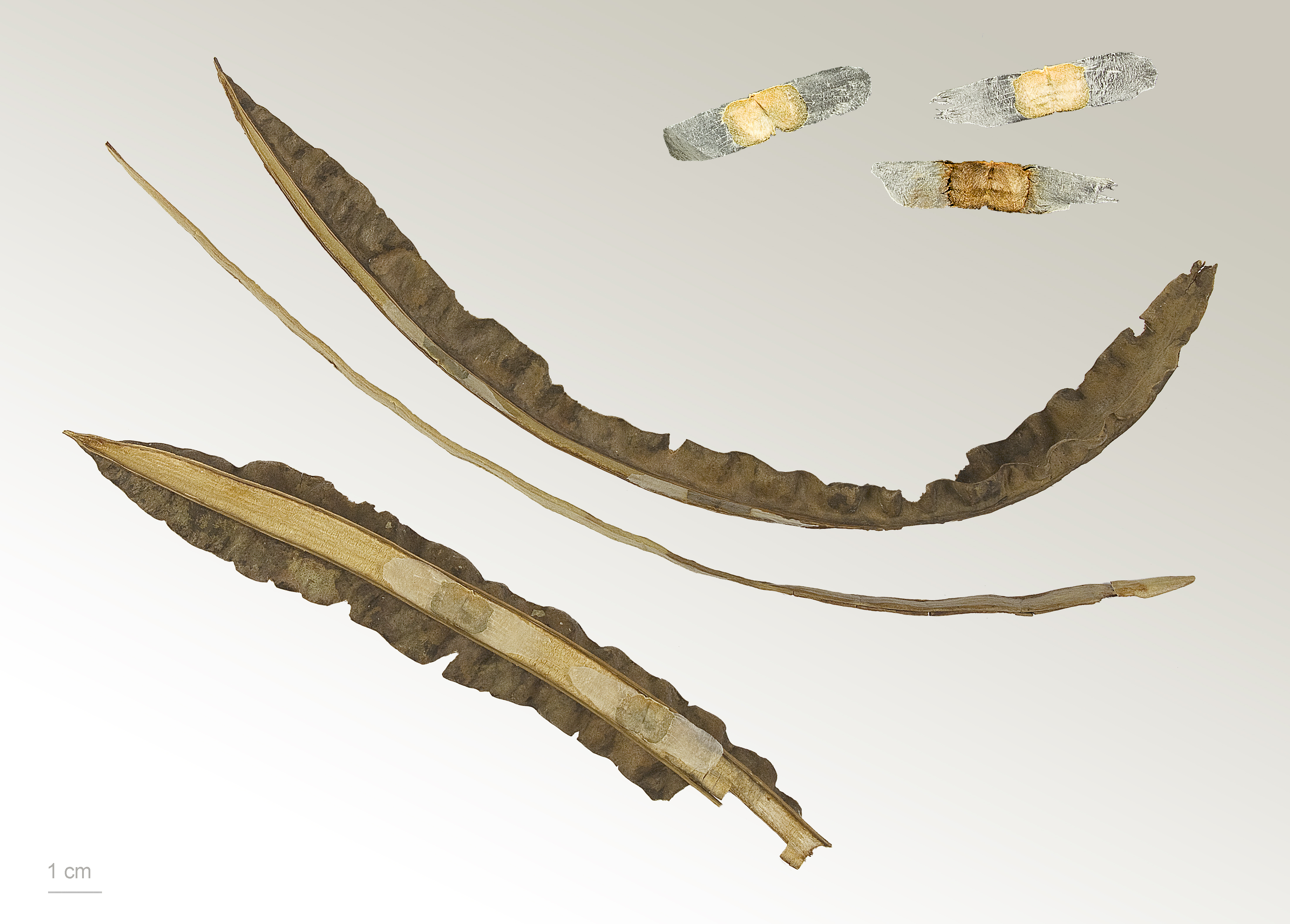|
Altamiro De Moura Pacheco State Park
The Altamiro de Moura Pacheco State Park ( pt, Parque Estadual Altamiro de Moura Pacheco) is a state park in the state of Goiás, Brazil. It protects an area of dry forest beside a major reservoir that supplies water to the state capital. Location The Altamiro de Moura Pacheco State Park is divided between the municipalities of Goianápolis, Nerópolis and Goiânia. It has an area of . The park is named for Altamiro de Moura Pacheco, physician, pharmacist, writer, cattle rancher and Goian politician, former owner of the area. It is also known as the Goiânia Ecological Park ( pt, Parque Ecológico de Goiânia). Highway BR-153 runs through the park, and provides the main land access route. Vegetation is mainly seasonal semi-deciduous forest and gallery forest. 485 species of plant have been recorded, in 315 genera and 97 families. Dry forest species such as '' Aspidosperma'' and ''Tabebuia'' species predominate. Most of the vegetation is dry forest and canopy forest, cerrado rest ... [...More Info...] [...Related Items...] OR: [Wikipedia] [Google] [Baidu] |
Goianápolis
Goianápolis is a municipality in central Goiás state, Brazil. It had a population of 11,224 (IBGE 2020 estimate) in a total area of 162.38 km2 (2007). The town is famous for its tomato production and as the birthplace of Leandro and Leonardo, one of the most famous country and western duos in recent Brazilian music. Location Goianápolis, the so-called "state tomato capital", is located 33 km. northwest of the state capital of Goiânia and 11 km. south of the important Goiânia-Brasília highway. It belongs to the Goiânia Microregion. Connections with Goiânia are made by BR-457 / GO-415. It forms boundaries with Anápolis, Terezópolis de Goiás, and Leopoldo de Bulhões. The climate is tropical humid. The hydrographic basin is formed by the streams of João Leite, Sozinha, Pindobal, Macaco, Arábia and da Gama. The water supply comes from the Ribeirão Sozinha. The municipality contains part of the Altamiro de Moura Pacheco State Park, created in 199 ... [...More Info...] [...Related Items...] OR: [Wikipedia] [Google] [Baidu] |
Giant Anteater
The giant anteater (''Myrmecophaga tridactyla'') is an insectivorous mammal native to Central and South America. It is one of four living species of anteaters, of which it is the largest member. The only extant member of the genus ''Myrmecophaga'', it is classified with sloths in the order Pilosa. This species is mostly terrestrial, in contrast to other living anteaters and sloths, which are arboreal or semiarboreal. The giant anteater is in length, with weights of for males and for females. It is recognizable by its elongated snout, bushy tail, long fore claws, and distinctively colored pelage. The giant anteater is found in multiple habitats, including grassland and rainforest. It forages in open areas and rests in more forested habitats. It feeds primarily on ants and termites, using its fore claws to dig them up and its long, sticky tongue to collect them. Though giant anteaters live in overlapping home ranges, they are mostly solitary except during mother-offspr ... [...More Info...] [...Related Items...] OR: [Wikipedia] [Google] [Baidu] |
Protected Areas Established In 1992
Protection is any measure taken to guard a thing against damage caused by outside forces. Protection can be provided to physical objects, including organisms, to systems, and to intangible things like civil and political rights. Although the mechanisms for providing protection vary widely, the basic meaning of the term remains the same. This is illustrated by an explanation found in a manual on electrical wiring: Some kind of protection is a characteristic of all life, as living things have evolved at least some protective mechanisms to counter damaging environmental phenomena, such as ultraviolet light. Biological membranes such as bark on trees and skin on animals offer protection from various threats, with skin playing a key role in protecting organisms against pathogens and excessive water loss. Additional structures like scales and hair offer further protection from the elements and from predators, with some animals having features such as spines or camouflage ser ... [...More Info...] [...Related Items...] OR: [Wikipedia] [Google] [Baidu] |
State Parks Of Brazil
State may refer to: Arts, entertainment, and media Literature * '' State Magazine'', a monthly magazine published by the U.S. Department of State * ''The State'' (newspaper), a daily newspaper in Columbia, South Carolina, United States * '' Our State'', a monthly magazine published in North Carolina and formerly called ''The State'' * The State (Larry Niven), a fictional future government in three novels by Larry Niven Music Groups and labels * States Records, an American record label * The State (band), Australian band previously known as the Cutters Albums * ''State'' (album), a 2013 album by Todd Rundgren * ''States'' (album), a 2013 album by the Paper Kites * ''States'', a 1991 album by Klinik * ''The State'' (album), a 1999 album by Nickelback Television * ''The State'' (American TV series), 1993 * ''The State'' (British TV series), 2017 Other * The State (comedy troupe), an American comedy troupe Law and politics * State (polity), a centralized political organ ... [...More Info...] [...Related Items...] OR: [Wikipedia] [Google] [Baidu] |
Marconi Perillo
Marconi Ferreira Perillo Júnior (born in Goiânia, March 7, 1963) is a Brazilian politician, affiliate to the Brazilian Social Democracy Party (PSDB). He is the former governor of the state of Goiás (1999–2002; 2003–2006; 2011–2018). Biography Marconi Ferreira Perillo Júnior was born in Goiânia, in the maternity Maternidade de Maio, on March 7, 1963, but was raised in Palmeiras de Goiás, where he consider his hometown. First born son of the merchant Marconi Ferreira Perillo and the housewife Maria Pires Perillo, he has also three other siblings: Antônio, Vânia and Tatiana. He went to Elementary School in the Public School of Palmeira de Goiás (1970–1978). At age 14 he had his first formal job, as a helper on the 2º Ofício de Notas em Palmeiras notary’s Office. At the age of 15, he went live with his uncle Jorge e Maria Conceição, in the city of Goiânia, to keep studying. In Goiânia, he went to high school in Pré-Médico College (1978–1980). In t ... [...More Info...] [...Related Items...] OR: [Wikipedia] [Google] [Baidu] |
Kayapo People
The Kayapo ( Portuguese: Caiapó ) people are the indigenous people in Brazil who inhabit a vast area spreading across the states of Pará and Mato Grosso, south of the Amazon River and along Xingu River and its tributaries. This pattern has given rise to the nickname the Xingu tribe. They are one of the various subgroups of the great Mebêngôkre nation (people from the water’s source). The term "Kayapo" is used by neighbouring groups rather than the Kayapo themselves. They refer to outsiders as "Poanjos". The type of sweet potato that forms an important part of the Kayapó diet is sometimes named "caiapo", after the tribe. It is cultivated under that name in Japan, and has been found to have health benefits. Location The Kayapo tribe lives alongside the Xingu River in the most east part of the Amazon Rainforest, in the Amazon basin, in several scattered villages ranging in population from one hundred to one thousand people in Brazil. Their land consists of tropical rain ... [...More Info...] [...Related Items...] OR: [Wikipedia] [Google] [Baidu] |
Cougar
The cougar (''Puma concolor'') is a large cat native to the Americas. Its range spans from the Canadian Yukon to the southern Andes in South America and is the most widespread of any large wild terrestrial mammal in the Western Hemisphere. It is an adaptable, generalist species, occurring in most American habitat types. This wide range has brought it many common names, including puma, mountain lion, catamount and panther (for the Florida sub-population). It is the second-largest cat in the New World, after the jaguar (''Panthera onca''). Secretive and largely solitary by nature, the cougar is properly considered both nocturnal and crepuscular, although daytime sightings do occur. Despite its size, the cougar is more closely related to smaller felines, including the domestic cat (''Felis catus'') than to any species of the subfamily Pantherinae. The cougar is an ambush predator that pursues a wide variety of prey. Primary food sources are ungulates, particularly deer, but it a ... [...More Info...] [...Related Items...] OR: [Wikipedia] [Google] [Baidu] |
Maned Wolf
The maned wolf (''Chrysocyon brachyurus'') is a large canine of South America. It is found in Argentina, Brazil, Bolivia, Peru, and Paraguay, and is almost extinct in Uruguay. Its markings resemble those of foxes, but it is neither a fox nor a wolf. It is the only species in the genus ''Chrysocyon'' (meaning "golden dog"). It is the largest canine in South America, weighing and up to at the withers. Its long, thin legs and dense reddish coat give it an unmistakable appearance. The maned wolf is a crepuscular and omnivorous animal adapted to the open environments of the South American savanna, with an important role in the seed dispersal of fruits, especially the wolf apple (''Solanum lycocarpum''). The maned wolf is a solitary animal. It communicates primarily by scent marking, but also gives a loud call known as "roar-barking". This mammal lives in open and semi-open habitats, especially grasslands with scattered bushes and trees, in the Cerrado of south, central-west, and ... [...More Info...] [...Related Items...] OR: [Wikipedia] [Google] [Baidu] |
Cerradão
Cerradão is a type of dry forest found in Brazil, associated with the cerrado savanna ecoregion. Structure Cerradão is a drought-resistant ("xerophitic") type of forest, with relatively sparse and slender trees. It includes species that are found in the cerrado strict sense and others that are found in forest. It has a canopy that is mostly continuous with tree coverage of 50% to 90%. Trees have an average height of . Cerradão trees are taller and denser than cerrado, and have straighter trunks without lower branches. Although physiognomically cerradão is a forest, floristically it is closer to a cerrado. The lighting conditions allow formation of differentiated strata of shrubs and herbs. The undergrowth bushes average in height. The ground layer consists of grasses that grow where there is most light. Leaves are often small and succulent, capable of holding water, with dense hairs or thick skin that prevent loss of water. The falling leaves add organic matter to the soil. ... [...More Info...] [...Related Items...] OR: [Wikipedia] [Google] [Baidu] |
State Park (Brazil)
A state park ( pt, Parque Estadual) in Brazil is a legally defined type of protected area operated by one of the states. Their goal is to preserve important or beautiful natural ecosystems. Public access is allowed subject to regulations defined by the responsible agency. Definition State parks fall under the same regulations as national parks, defined by law 9.985 of July 2000. The park's basic objective is preservation of natural ecosystems of great ecological relevance and scenic beauty. This enables the conduct of scientific research and the development of educational activities and environmental interpretation, recreation in contact with nature and eco tourism. The park is publicly owned, and private areas included in its limits will be expropriated when it is established. Public visitation is subject to the rules and restrictions set out in Unit Management Plan, rules established by the body responsible for its administration, and those provided for by regulation. Scientific ... [...More Info...] [...Related Items...] OR: [Wikipedia] [Google] [Baidu] |
Cerrado
The ''Cerrado'' (, ) is a vast ecoregion of tropical savanna in eastern Brazil, particularly in the states of Goiás, Mato Grosso do Sul, Mato Grosso, Tocantins, Minas Gerais, and the Federal District. The core areas of the Cerrado biome are the Brazilian highlands – the ''Planalto''. The main habitat types of the Cerrado consist of forest savanna, wooded savanna, park savanna and gramineous-woody savanna. The ''Cerrado'' also includes savanna wetlands and gallery forests. The second largest of Brazil's major habitat types, after the Amazonian rainforest, the Cerrado accounts for a full 21 percent of the country's land area (extending marginally into Paraguay and Bolivia). The first detailed European account of the Brazilian cerrados was provided by Danish botanist Eugenius Warming (1892) in the book ''Lagoa Santa'', : The above is the original. There are other, later French and Portuguese translations not listed here. in which he describes the main features of th ... [...More Info...] [...Related Items...] OR: [Wikipedia] [Google] [Baidu] |
Tabebuia
''Tabebuia'' is a genus of flowering plants in the family Bignoniaceae.Eberhard Fischer, Inge Theisen, and Lúcia G. Lohmann. 2004. "Bignoniaceae". pages 9-38. In: Klaus Kubitzki (editor) and Joachim W. Kadereit (volume editor). ''The Families and Genera of Vascular Plants'' volume VII. Springer-Verlag: Berlin; Heidelberg, Germany. The common name "roble" is sometimes found in English. ''Tabebuias'' have been called "trumpet trees", but this name is usually applied to other trees and has become a source of confusion and misidentification. ''Tabebuia'' consists almost entirely of trees, but a few are often large shrubs. A few species produce timber, but the genus is mostly known for those that are cultivated as flowering trees.David J. Mabberley. 2008. ''Mabberley's Plant-Book'' third edition (2008). Cambridge University Press: UK. ''Tabebuia'' is native to the American tropics and subtropics from Mexico and the Caribbean to Argentina. Most of the species are from Cuba ... [...More Info...] [...Related Items...] OR: [Wikipedia] [Google] [Baidu] |




.jpg)


